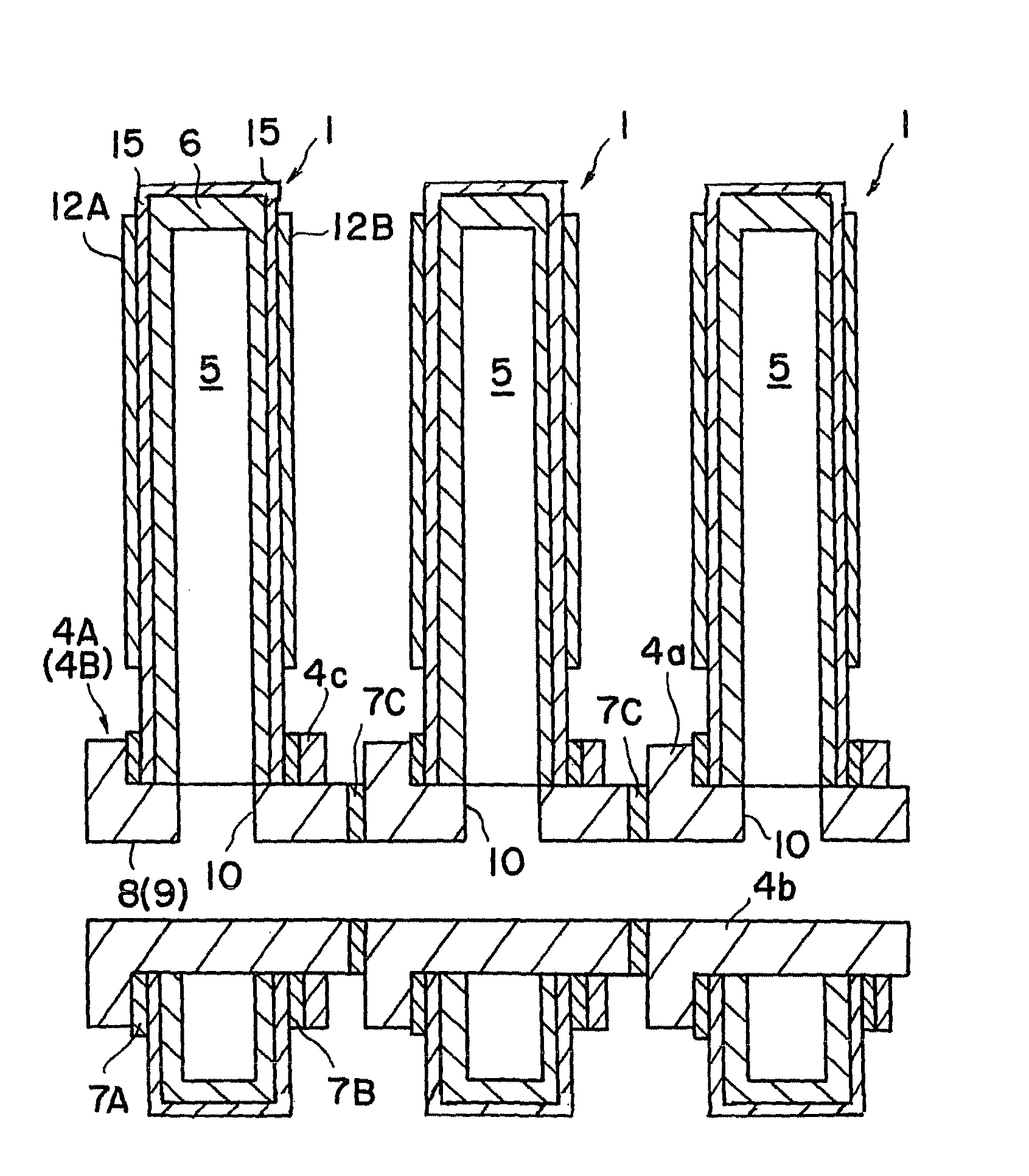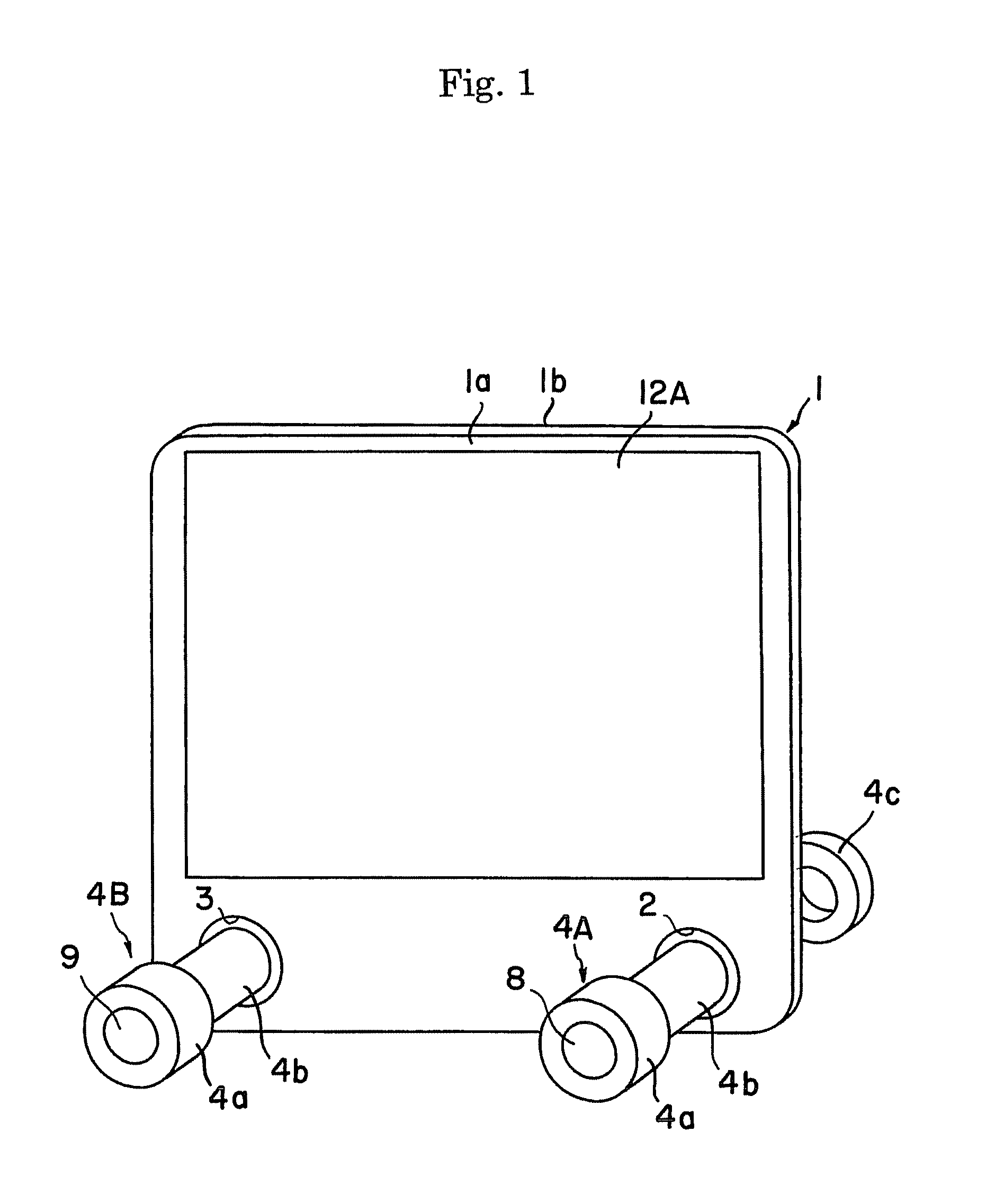Electrochemical cell stacks
a technology of electrochemical cells and stacks, applied in the field of electrochemical apparatus, can solve the problems of stress being applied to the cells, and achieve the effect of preventing the application of stress between the electrochemical cells
- Summary
- Abstract
- Description
- Claims
- Application Information
AI Technical Summary
Benefits of technology
Problems solved by technology
Method used
Image
Examples
Embodiment Construction
[0018]In the present invention, an electrochemical cell is preferably in the form of a plate. However, the electrochemical cell is not limited to a flat-shaped plate, and may be a curved plate or an arc-shaped plate. The electrochemical cell comprises a first electrode which comes into contact with a first gas, a solid electrolyte film, and a second electrode which comes into contact with a second gas.
[0019]Here, the first electrode and the second electrode are selected from an anode or a cathode. When one of the first and second electrodes is the anode, the other is the cathode. Similarly to this, the first gas and the second gas are selected from an oxidizing gas or a reducing gas.
[0020]The oxidizing gas is not particularly limited, and may be any gas as long as capable of supplying oxygen ions to the solid electrolyte film, including air, diluted air, oxygen, and diluted oxygen. As the reducing gas, H2, CO, CH4, and a mixed gas thereof are exemplified.
[0021]The electrochemical ce...
PUM
| Property | Measurement | Unit |
|---|---|---|
| voltage | aaaaa | aaaaa |
| temperatures | aaaaa | aaaaa |
| surface roughness | aaaaa | aaaaa |
Abstract
Description
Claims
Application Information
 Login to View More
Login to View More - R&D
- Intellectual Property
- Life Sciences
- Materials
- Tech Scout
- Unparalleled Data Quality
- Higher Quality Content
- 60% Fewer Hallucinations
Browse by: Latest US Patents, China's latest patents, Technical Efficacy Thesaurus, Application Domain, Technology Topic, Popular Technical Reports.
© 2025 PatSnap. All rights reserved.Legal|Privacy policy|Modern Slavery Act Transparency Statement|Sitemap|About US| Contact US: help@patsnap.com



